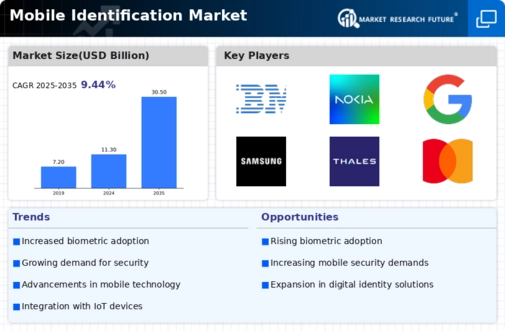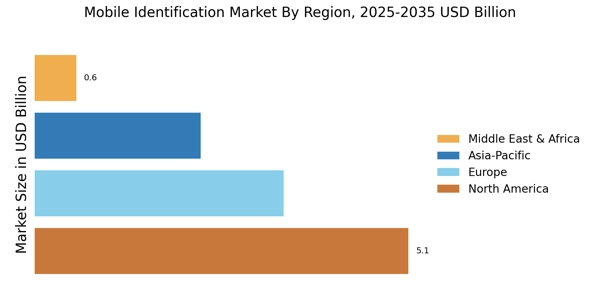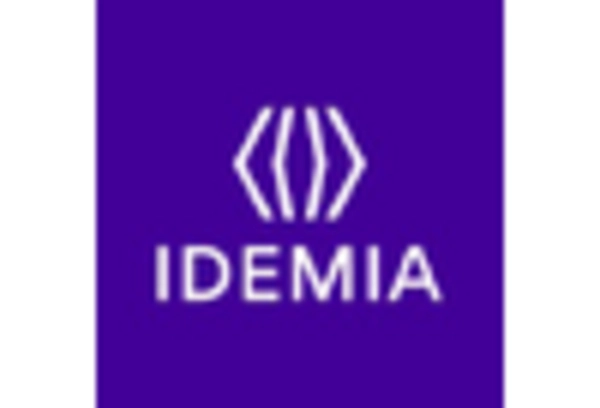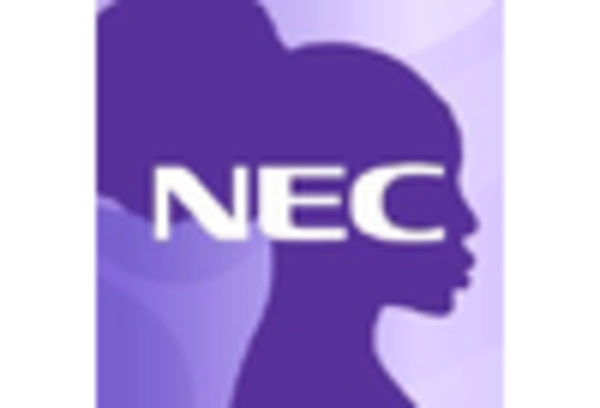Growing Consumer Awareness and Acceptance
The Mobile Identification Market is benefiting from growing consumer awareness and acceptance of mobile identification technologies. As individuals become more informed about the advantages of mobile identification, such as convenience and enhanced security, their willingness to adopt these solutions is increasing. Surveys indicate that a significant percentage of consumers are now comfortable using biometric authentication methods for various applications, including mobile banking and e-commerce. This shift in consumer perception is likely to drive the demand for mobile identification solutions, as businesses strive to meet the evolving expectations of their customers. The increasing acceptance of mobile identification technologies is expected to play a pivotal role in shaping the future landscape of the Mobile Identification Market.
Increasing Demand for Secure Transactions
The Mobile Identification Market is experiencing a notable surge in demand for secure transaction methods. As consumers increasingly prioritize security in their financial dealings, mobile identification solutions that utilize biometric authentication are becoming essential. According to recent data, the market for mobile payment solutions is projected to reach USD 4 trillion by 2025, indicating a robust growth trajectory. This trend is driven by the need for enhanced security measures to combat fraud and identity theft. Consequently, businesses are investing in mobile identification technologies to ensure secure transactions, thereby fostering trust among users. The integration of advanced security features in mobile identification solutions is likely to further propel market growth, as organizations seek to protect sensitive information and maintain compliance with regulatory standards.
Regulatory Compliance and Data Protection
The Mobile Identification Market is increasingly influenced by regulatory compliance and data protection requirements. Governments and regulatory bodies are implementing stringent regulations to safeguard personal data and ensure privacy. This has led organizations to adopt mobile identification solutions that comply with these regulations, thereby enhancing their credibility and trustworthiness. For instance, the General Data Protection Regulation (GDPR) has prompted businesses to prioritize data protection in their operations. As a result, mobile identification technologies that offer robust security features are becoming essential for organizations aiming to meet compliance standards. The emphasis on regulatory compliance is likely to drive the growth of the Mobile Identification Market, as businesses seek to mitigate risks associated with data breaches and non-compliance.
Technological Advancements in Mobile Identification
The Mobile Identification Market is significantly influenced by ongoing technological advancements. Innovations in biometric technologies, such as facial recognition and fingerprint scanning, are enhancing the accuracy and reliability of mobile identification solutions. These advancements are not only improving user experience but also increasing the efficiency of identification processes. Furthermore, the integration of artificial intelligence and machine learning in mobile identification systems is enabling real-time data analysis and decision-making. As these technologies continue to evolve, they are expected to play a crucial role in shaping the future of the Mobile Identification Market. The continuous improvement in technology is likely to attract more businesses to adopt mobile identification solutions, thereby expanding the market.
Adoption of Mobile Identification in Various Sectors
The Mobile Identification Market is witnessing widespread adoption across various sectors, including banking, healthcare, and retail. This diversification is largely attributed to the increasing need for efficient and secure identification methods. For instance, the banking sector is rapidly implementing mobile identification solutions to streamline customer onboarding processes and enhance security protocols. In healthcare, mobile identification is being utilized to ensure accurate patient identification, thereby reducing the risk of medical errors. Retailers are also leveraging mobile identification to personalize customer experiences and improve service delivery. The versatility of mobile identification technologies is likely to drive their adoption across different industries, contributing to the overall growth of the market.


















Leave a Comment